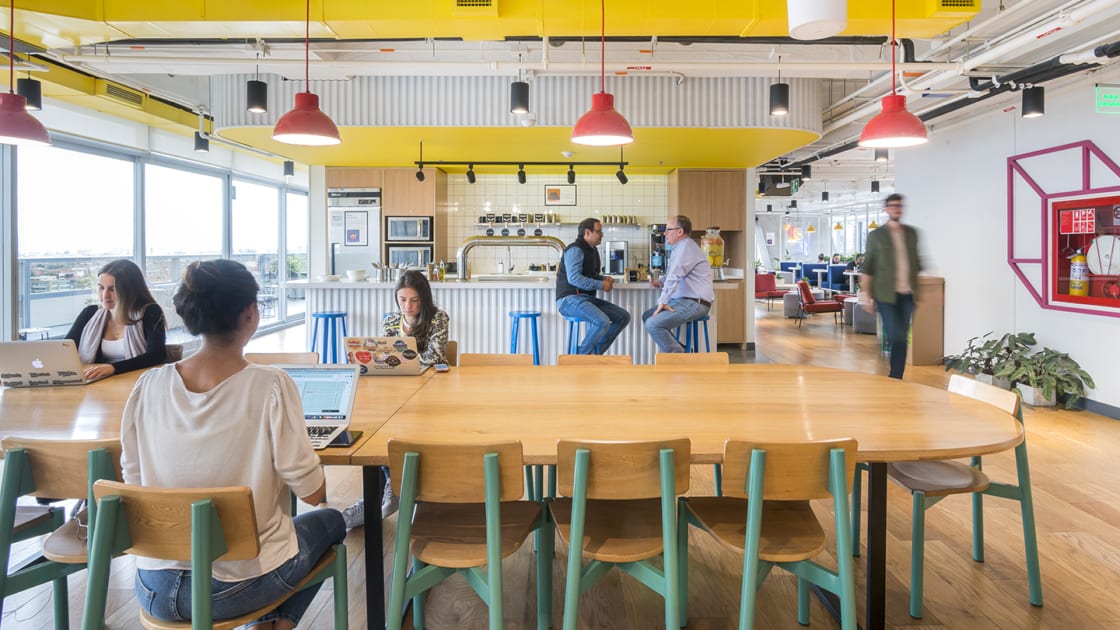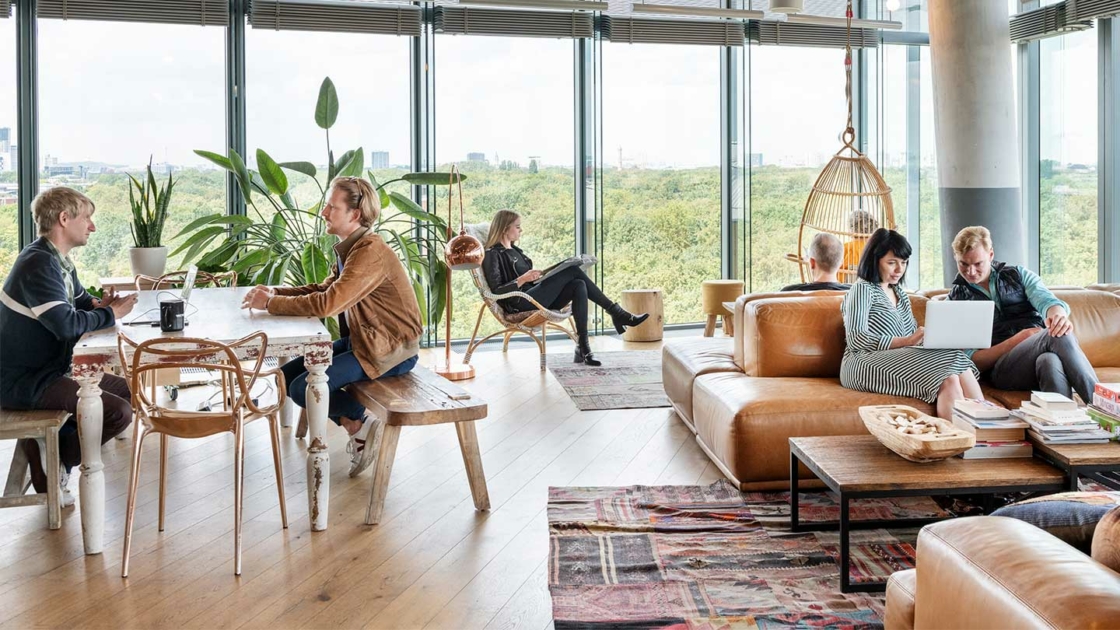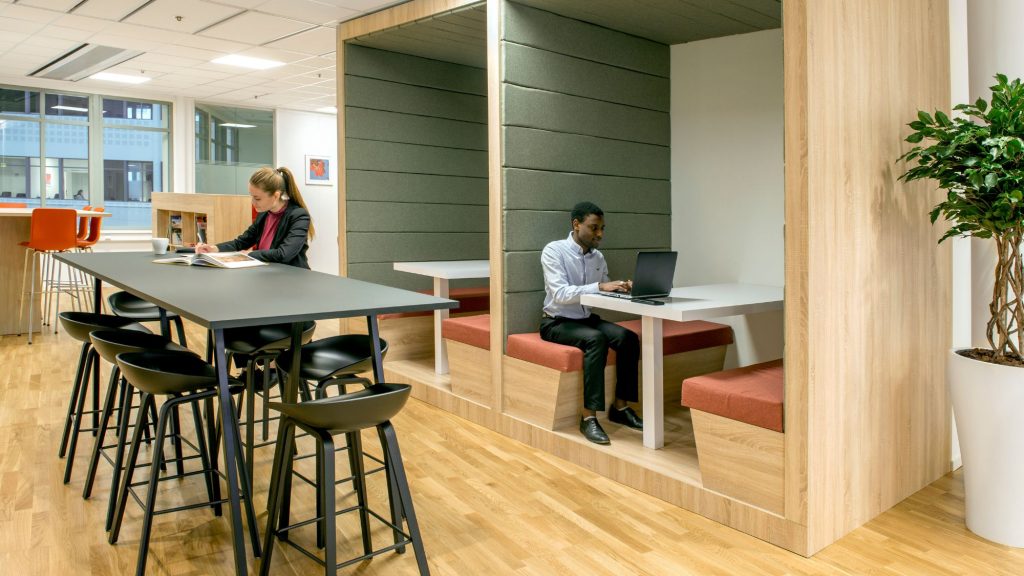Hello!
 As professional priorities evolve, coworking spaces are gaining traction among workers seeking modern, flexible, and inspiring alternatives to traditional office environments.
As professional priorities evolve, coworking spaces are gaining traction among workers seeking modern, flexible, and inspiring alternatives to traditional office environments.
Tired of rigid schedules, uninspiring cubicles, and isolated workspaces, many are drawn to coworking for its innovative designs, collaborative opportunities, and modern amenities.
But what exactly motivates this shift, and what are people trying to escape? Let’s explore the key factors driving the coworking revolution.
Open Spaces: A Breath of Fresh Air
 Unlike the walled-off cubicles of traditional offices, coworking spaces emphasize open layouts that foster productivity and creativity. These spaces may feature clusters of workstations, glass-walled conference rooms for privacy, or shared desks, creating an environment that feels less confining.
Unlike the walled-off cubicles of traditional offices, coworking spaces emphasize open layouts that foster productivity and creativity. These spaces may feature clusters of workstations, glass-walled conference rooms for privacy, or shared desks, creating an environment that feels less confining.
Psychological studies, including those on feng shui, suggest that open layouts positively impact mental well-being and productivity. By reducing physical barriers, coworking spaces encourage a sense of freedom and inspiration, making them a stark contrast to the isolating designs of conventional offices.
Unusual Designs: Inspiring Creativity
 Beyond open layouts, coworking spaces often incorporate unconventional designs to spark inspiration.
Beyond open layouts, coworking spaces often incorporate unconventional designs to spark inspiration.
From uniquely shaped furniture to wellness areas for meditation or trampoline yoga, these spaces prioritize creativity and well-being.
Strategically placed mirrors in wellness zones can make rooms feel larger and allow users to perfect their form during activities. Some coworking spaces even offer game rooms with foosball, billiards, or ping-pong, providing fun outlets for breaks. These thoughtful design elements create environments where workers feel energized rather than drained.
Modern Amenities: A Step Above
 Coworking spaces are typically housed in cutting-edge buildings equipped with advanced technology and amenities.
Coworking spaces are typically housed in cutting-edge buildings equipped with advanced technology and amenities.
Unlike older office buildings, these spaces often feature high-speed internet, smart conference room booking systems, and “hot desks” that can be shared or rearranged as needed.
These modern touches enhance efficiency and adaptability, catering to the dynamic needs of today’s workforce. By contrast, traditional offices often lag behind, with outdated infrastructure that can hinder productivity.
Flexible Schedules: Freedom to Work Your Way
Traditional 9-to-5 schedules can feel restrictive, burning out employees and stifling their natural rhythms. Coworking spaces offer a solution with flexible work arrangements. Advanced technology allows workers to book desks or meeting rooms as needed, while shared workspaces accommodate varying schedules. This flexibility reduces stress and empowers employees to work when they’re most productive, creating a healthier balance between work and life.
Enhanced Security: Peace of Mind
 Security is a priority in modern coworking spaces, which often surpass traditional offices in safeguarding both physical and digital assets.
Security is a priority in modern coworking spaces, which often surpass traditional offices in safeguarding both physical and digital assets.
Many use biometric data or advanced identification systems for entry, ensuring only authorized individuals gain access.
Shared desks are equipped with secure login systems to protect sensitive data and minimize cyber risks. For companies handling confidential information, coworking spaces can restrict access to specific areas, offering tailored security solutions that traditional offices may lack.
Collaboration: The Heart of Coworking
Open spaces don’t just boost comfort—they also foster collaboration. By enabling physical movement and interaction, coworking environments increase productivity and spark innovation. These spaces are designed to bring together complementary groups, with areas for small teams, large multi-group events, or casual brainstorming sessions. This setup encourages cross-pollination of ideas, transforming work into a dynamic, engaging process rather than a monotonous grind. Traditional offices, with their rigid structures, often stifle such interactions.
Not for Everyone: The Traditionalist Perspective
While coworking spaces offer exciting possibilities, they aren’t universally appealing. Some companies require focused, solitary work environments and have little interest in socializing or collaborative setups. For these organizations, traditional offices remain the better fit. The rise of coworking isn’t about replacing conventional workspaces but about expanding options to suit diverse professional needs.
Also read:
- Spotify Learns a Lesson: Free Users Are the Engine of Growth Thanks to YouTube’s Influence
- Expedia’s Trip Matching: Leveraging Influencer Content Without Paying Them
- Anchor Co-Founders Launch Oboe: An AI-Powered Online Course Generator with a Single Prompt
Why Choose Coworking?
Whether you’re an individual entrepreneur, a startup seeking collaboration, or a team craving a vibrant atmosphere, coworking spaces offer compelling benefits. They provide access to modern facilities, flexible schedules, and opportunities to connect with like-minded professionals. By breaking free from the constraints of traditional offices, coworking spaces empower workers to thrive in environments that inspire creativity, foster collaboration, and adapt to their unique needs. The choice is yours — embrace the future of work with coworking.
Thank you!
Join us on social media!
See you!






